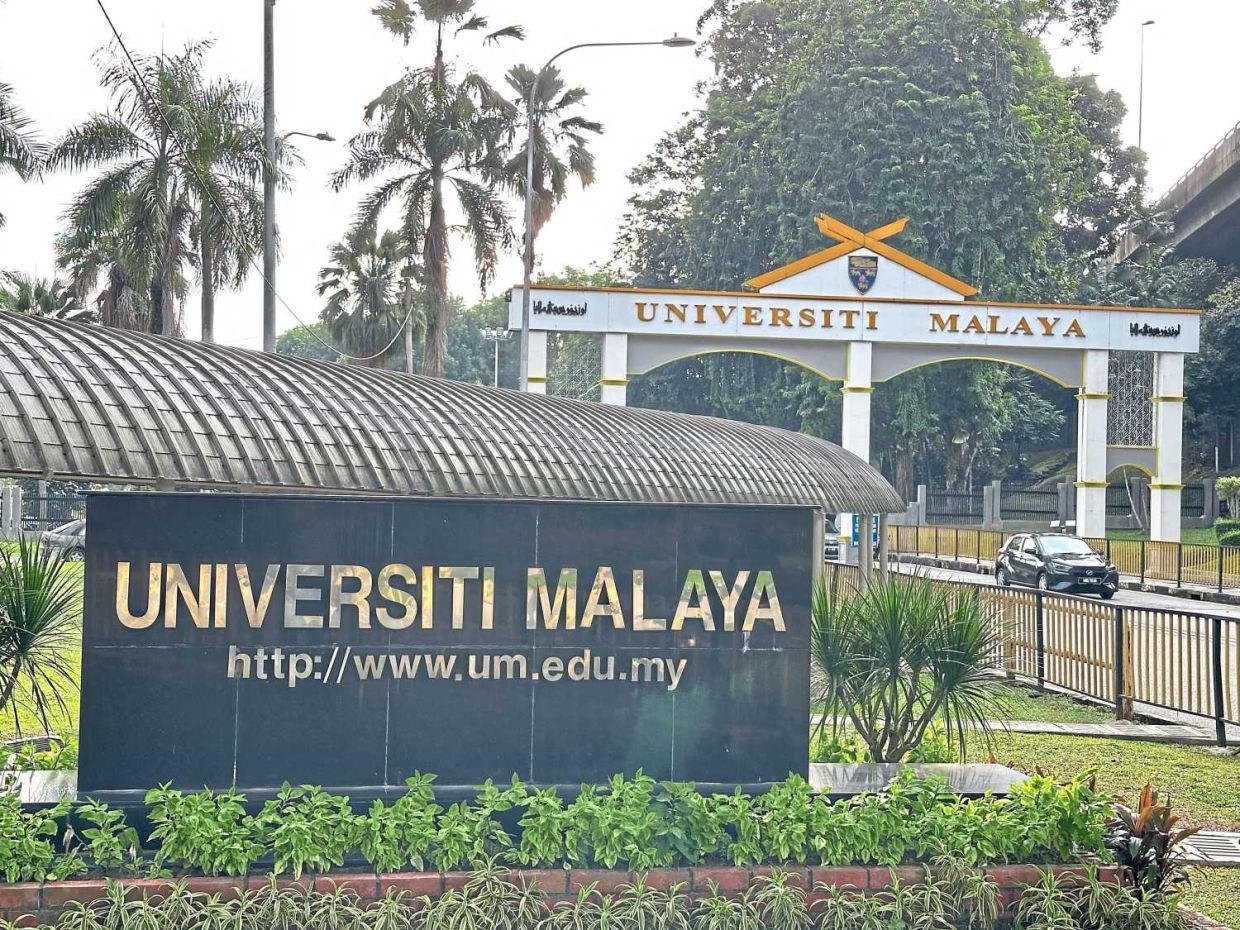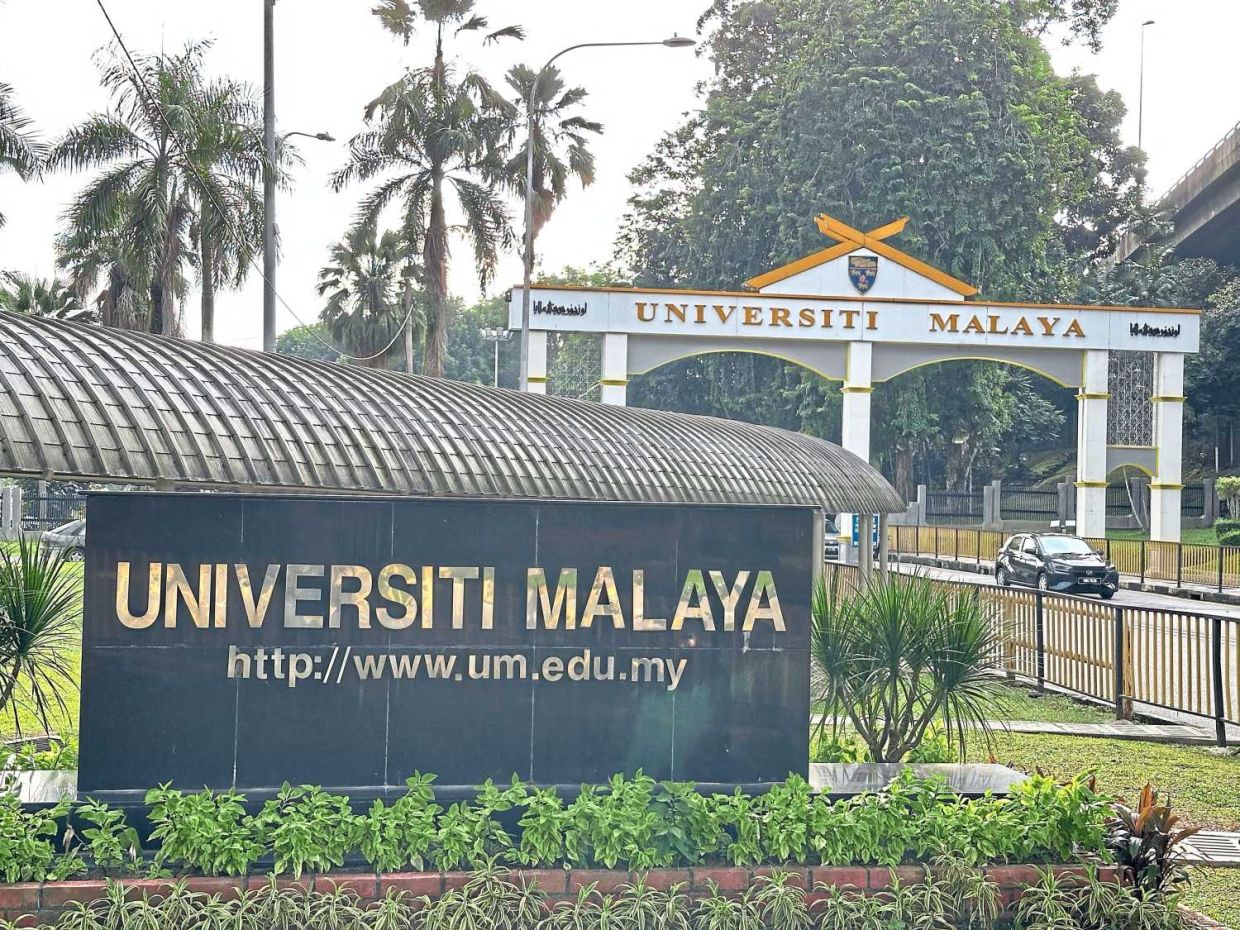
PETALING JAYA: Universiti Malaya (UM) continues to lead as Malaysia’s highest-ranked institution in the Quacquarelli Symonds (QS) World University Rankings: Asia 2026, placing 15th in the region despite a slight drop from 12th in the 2025 edition.
In the latest QS rankings, 49 Malaysian universities are listed, with 30 improving, 10 declining, and nine new entries.
UM was notable in three of the 11 QS indicators—14th in Asia for Academic Reputation, 10th for Employer Reputation, and fourth for International Research Network.
Following UM, Universiti Putra Malaysia (UPM) is ranked 22nd, Universiti Kebangsaan Malaysia (UKM) 24th, Universiti Teknologi Malaysia (UTM) 25th, and Universiti Sains Malaysia (USM) 34th, ensuring all five of Malaysia’s research universities are now among Asia’s top 50.
Taylor’s University achieved its best result, rising to 27th, while UCSI University entered the top 30 for the first time, reaching 30th after climbing 75 places in five years.
Universiti Teknologi PETRONAS (UTP) rose to 44th, Sunway University to 55th, and Universiti Utara Malaysia (UUM) to 65th.
Several institutions achieved notable improvements across specific indicators: Al-Madinah International University is first in Asia for International Students, INTI International University places 22nd for International Faculty, as well as third and sixth for Inbound and Outbound Exchange Students, and Perdana University is second for Faculty-Student Ratio.
Taylor’s leads Malaysia in Citations per Paper (35th regionally), while UTP tops the country in Papers per Faculty (41st regionally).
According to a press release on Tuesday (Nov 4), QS said Malaysia performed strongly across nearly all academic indicators, ranking above the regional average in nine out of 11 metrics.
QS senior vice president Ben Sowter noted that while academic and employer reputation indicators remain Malaysia’s strengths, the country’s next frontier lies in research performance, particularly in citations and publication output.
Three Malaysian universities are among Asia’s top 10 for International Research Network—more than any other system in the region—reflecting Malaysia’s strong engagement in global partnerships and co-authored research.
This international success is the result of a decade of targeted government policy to internationalise Malaysian higher education, with a focus on joint research, faculty exchange, and partnerships across Asean, Europe, and the Middle East.
However, the report highlights research productivity as Malaysia’s key challenge. In Citations per Paper and Papers per Faculty, only one Malaysian institution ranks within Asia’s top 100.
To sustain its upward trajectory, the report recommends Malaysia continue investing in research infrastructure, international co-publication, and industry collaboration.
The QS report ‘How universities are shaping Asean’s tomorrow’, released alongside the rankings, explores how Asean higher education is fuelling economic transformation through skills, research, and sustainability. The report finds that aligning higher education with labour-market demand could unlock up to US$900bil (RM4.23 trillion) in additional economic value across Asean by 2035.
Malaysia is cited as a model of internationalisation and system coordination, nearly achieving its target of 250,000 international students by 2025.
Its universities combine affordability, cultural openness, and global credibility, making Malaysia one of the fastest-growing education destinations in the region.
Malaysia’s high STEM graduate share is recognised as a key factor supporting its manufacturing and innovation sectors, with universities such as UM, UTM, and USM driving cross-border collaborative research.
QS chief executive officer Jessica Turner said: “Malaysia’s progress shows the power of education as an engine of inclusive growth. If governments continue to align education and labour market strategies, the region could unlock nearly US$900bil in additional value by 2035. Malaysia’s leadership in international education shows how that vision can become reality.”
The QS World University Rankings: Asia 2026 features 1,529 universities across 25 higher education systems, evaluated across 11 indicators: Academic Reputation, Employer Reputation, Faculty-Student Ratio, Citations per Paper, Papers per Faculty, Staff with PhD, International Research Network, International Faculty, International Students, Inbound Exchange Students, and Outbound Exchange Students.
Regionally, The University of Hong Kong was ranked Asia’s top university, overtaking last year’s leader Peking University, which is now second.
The National University of Singapore (NUS) and Nanyang Technological University (NTU) share joint third place. Fudan University remains fifth, while The Hong Kong University of Science and Technology (HKUST) leapt from 11th to sixth.
The Chinese University of Hong Kong (CUHK) and City University of Hong Kong (CityUHK) are joint seventh, followed by Tsinghua University in ninth, and The Hong Kong Polytechnic University (PolyU) in tenth.
The full 17th edition of the rankings, released on Tuesday (Nov 4), is available at https://topuniversities.com/asia-university-rankings.






